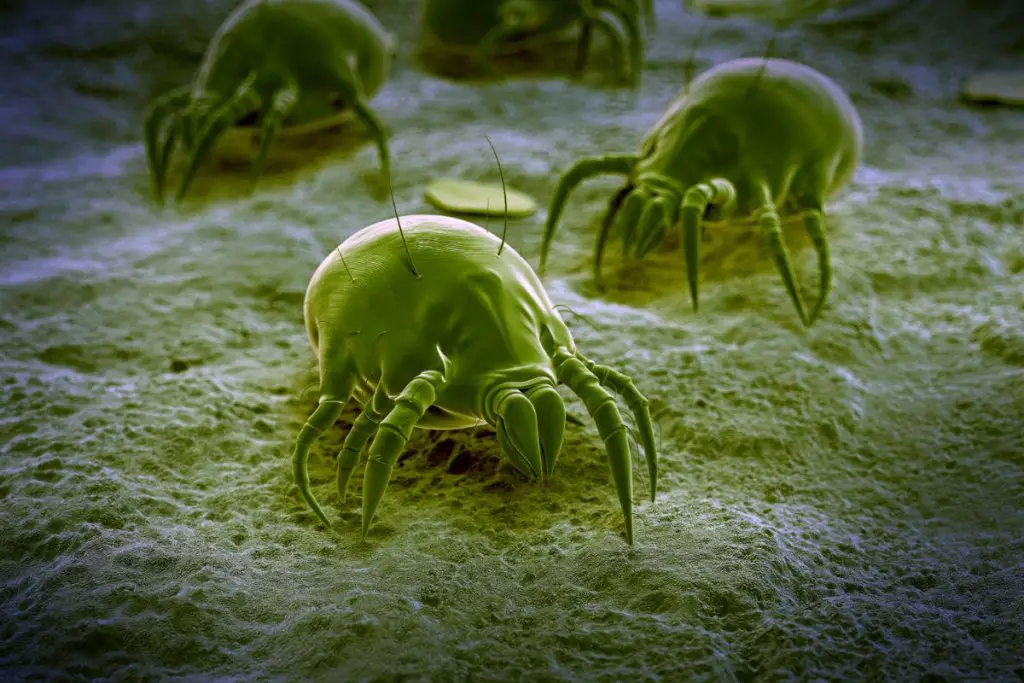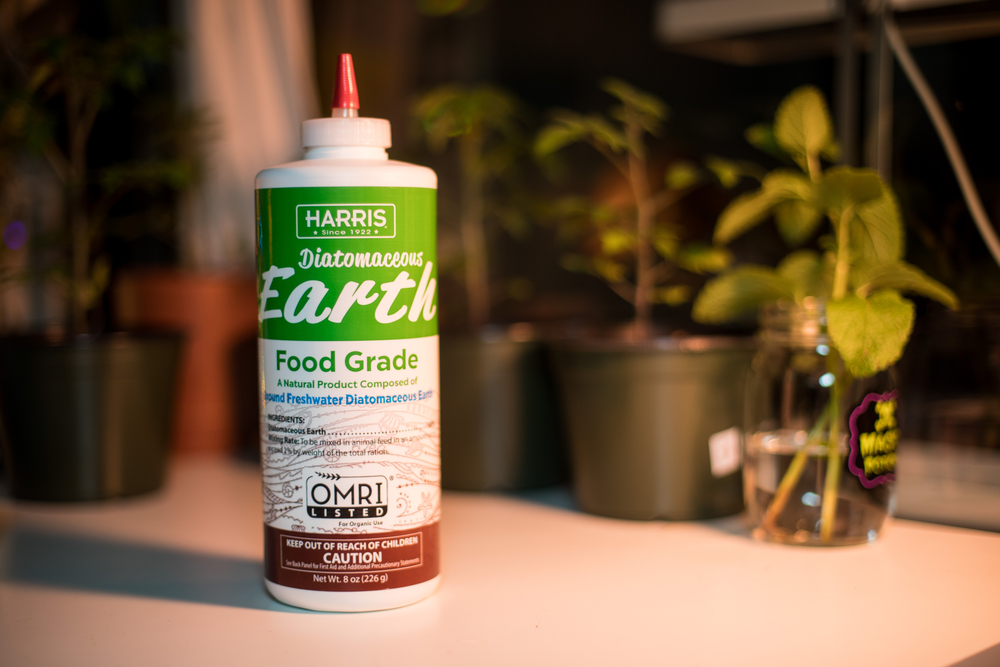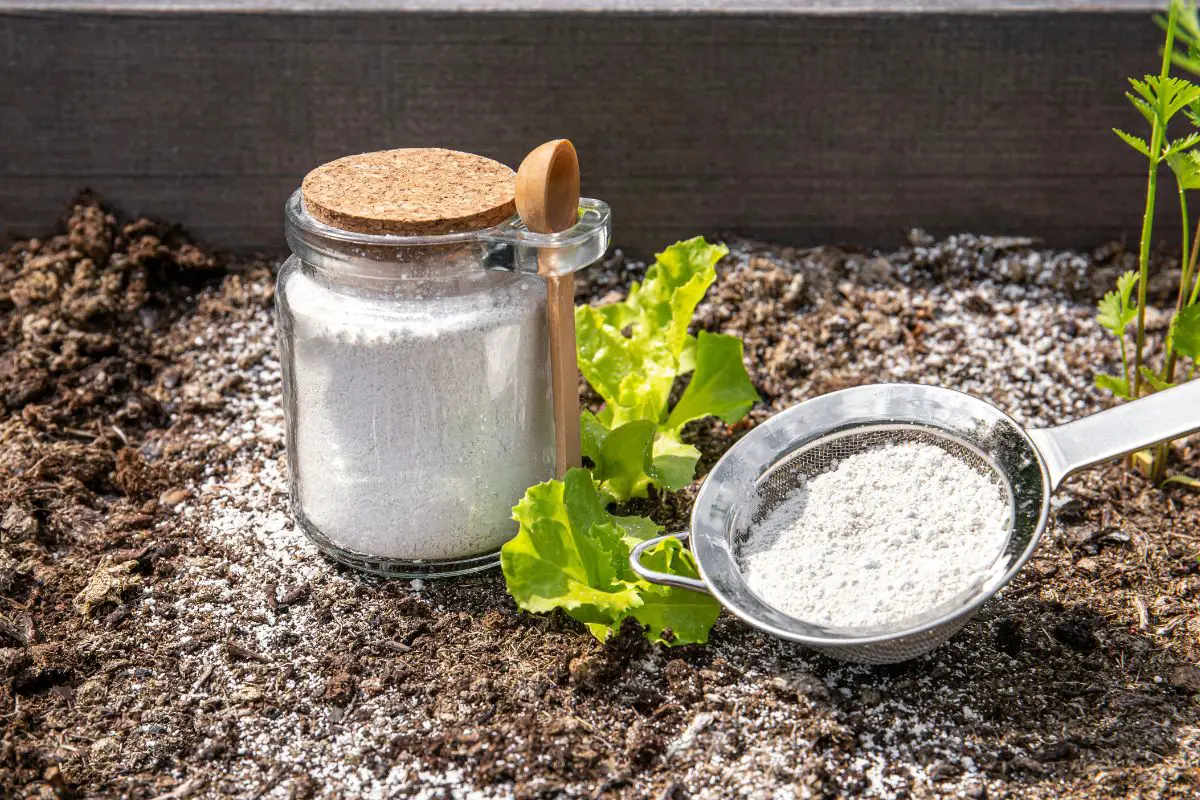Food-Grade Diatomaceous Earth an excellent solution to eradicate mites, fleas and lice from your chicken coop. Using it is simply a matter of sprinking it around various parts of your coop.
Have you heard that diatomaceous earth can help with parasite or pest control, but don’t know how to use it? You are not alone! Applying diatomaceous earth has proven to be an effective way of controlling external parasites on chickens, including fleas, mites, and lice.
Diatomaceous earth is also effective for certain internal parasites and may also supplement minerals in your flock’s diet. If your hens are not laying eggs as well as they used to, one possible cause is parasites.
Here’s everything you need to know about how to properly use diatomaceous earth for your backyard chickens.
But first things first:
Table of Contents
What is Diatomaceous Earth?
Also abbreviated as DE, diatomaceous earth is an off-white, greyish talc-like powder that’s the fossilized remains of aquatic phytoplankton known as diatoms.
Today, DE is used as a natural pesticide and food additive to control parasites in backyard chickens, keep internal parasites off their digestive tracts, and provide chickens with essential nutrients that help them lay larger and healthier eggs.
Why People Use Diatomaceous Earth for Chickens
Using diatomaceous earth for chickens can help you avoid using unnecessary chemicals on your birds.
DE should be used mainly as a preventive measure rather than treatment for a widespread infestation.
Diatomaceous earth can also be used as a dust bath, which allows your birds to roll in it when they want to take care of themselves.
Simply put, people use diatomaceous earth for chickens instead of other parasite control methods to minimize chemical use and allows their chickens to manage themselves.
How Diatomaceous Earth Works
Diatomaceous earth is a mechanical pesticide that works by destroying the waxy coating or cuticle on parasites that protects them from getting dehydrated.
It basically dries out the fleas, lice and mites by dehydrating them to their death, but it is completely safe for your chickens.

It scratches away the protective layer of the interstices, which hinders the digestive and immune systems – thereby killing the parasite. In other words, it desiccates – or dries out the insect.
DE has some sharp microscopic shards of silica, which cuts the parasites up. These silica edges look like tiny glass-like edges and when they get into contact with the exoskeleton, they cut it into pieces.
DE is used where parasites live and reaches the exoskeleton due to static electricity.
Benefits of Diatomaceous Earth for Chickens
- Diatomaceous earth is a non-toxic preventative way of controlling parasites and insects on chickens and in chicken coops.
- DE is can be added to the nest and chicken dust bath for enhanced protection throughout the year.
- You can feed DE to your chickens since it is beneficial to them.
- You can use DE as a chicken feed additive as it helps keep the feed free of parasites.
- When DE is used as a chicken feed additive, it can increase egg production.
Safety Concerns to consider when using Diatomaceous Earth for Chickens
While DE is a chemical-free way of controlling parasites and pests on chickens and in chicken coops, there are a few safety concerns to keep in mind. This is because dust inhalation of DE can be harmful for both you and your birds.
You should never use pool-grade DE or the calcined forms of the product because they have high silica content. These typically contain large amounts of crystalline silica, which are known to cause silicosis.

When applying DE, it’s always a good idea to wear a face mask. While some consider direct application to be safe, we recommend indirect application in your chicken coop because it can cause respiratory problems.
In many applications, DE comes in various grades. It’s important to use only food-grade diatomaceous earth for your chicken coop because it is the safest form.
Industrial or filter-grade DE has significantly higher concentrations of crystalline silica and can be harmful to mammals.
How to Use Diatomaceous Earth for Your Chickens
Diatomaceous earth is a budget-friendly, non-toxic alternative to pesticides or insecticide options. It is also easy to physically apply diatomaceous earth to your chicken coop.
Here are 7 easy steps to take when using diatomaceous earth for your chooks:
1. Get your flock out of the coop
Your birds can inhale DE particles without experiencing respiratory problems. So be sure to remove your chooks from the chicken coop before cleaning it.
2. Clean the chicken coop
Dispose of the old litter and scrub out the door frames, window sills, and any cracks. Parasites can attach themselves anywhere and return to the coop.
3. Give it time to dry
Find a temporary space to keep your flock for at least 24 hours to allow your coop to dry before applying DE.
The main disadvantage of applying a natural product is that it becomes less effective when it gets wet. Therefore, chicken keepers should make sure the coop is dry before applying DE.
4. Use a Mask
The concern here is DE inhalation. It is unhealthy for humans and chickens to inhale DE dust. Therefore, take care when applying DE to avoid breathing it in.
To be on the safe side, wear a mask when applying DE. You also want to protect your eyes.
5. Spread the DE
Spread food-grade DE in the nesting boxes, apply it across the flooring, rub it along perches, and pay particular attention to its nooks and crannies.
6. Replace the older litter with clean litter
After applying DE, replace the old bedding with new, cleaning bedding.
7. Welcome Your Flock Back Home
After replacing the old litter with clan litter, it’s time to welcome your birds to their favorite home.
Conclusion
Overall, diatomaceous earth is a helpful natural product to get rid of parasites like chicken mites and lice in your chicken coop. You should use only food-grade DE in your coop to control external parasites naturally and keep your flock safe and comfortable.
Diatomaceous earth will get rid of any target parasite that comes into contact with it, but it is proven to be safe around humans and other mammals.

